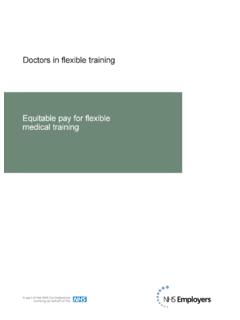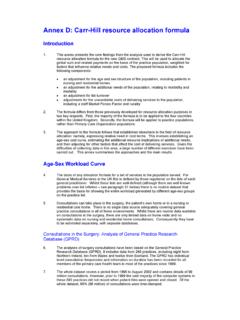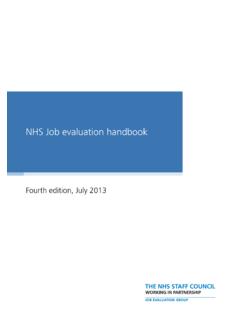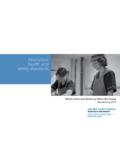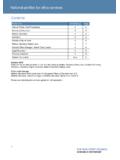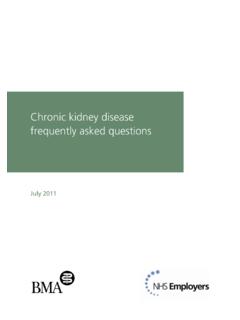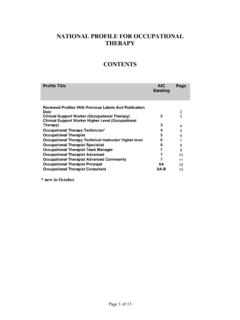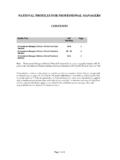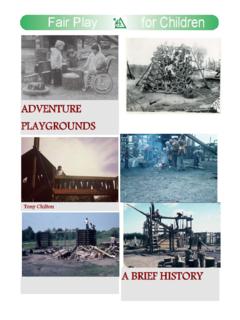Transcription of Health and Safety (Young Persons) Regulations 1997
1 Page 1 of 4 Date November 2009 Association of Interior Specialists Olton Bridge 245 Warwick Road Solihull west midlands B92 7AH Tel 0121 707 0077 Fax 0121 706 1949 Email Website Health and Safety ( young persons ) Regulations 1997 Health and Safety ( young persons ) Regulations 1997 Introduction The Health and Safety ( young persons ) Regulations 1997 applies to situations where young people (defined as under the age of 18) are at work and also cover children at work (ie those who have not attained the school leaving age and for children special provisions apply). The legislation applies to young people and children on training schemes, work experience, etc and place the onus for compliance on the employer under the Health and Safety (Training for Employment) Regulations 1990 youngsters on such schemes are designated as employees for purposes of Health and Safety legislation.
2 What is a young person? A young person is any person under the age of eighteen (18). Children between 13 and the minimum school leaving age (which is 15 or 16 depending upon when the person s birthday falls) are prohibited from being employed in industrial undertakings such as factories and construction sites except when on work experience schemes approved by the local education authority. A young person on a work experience scheme is deemed to be the employee of the person providing the work experience. Children under 13 years old are generally prohibited from any form of employment.
3 When you employ someone you must ensure that they are above the minimum school leaving age or if they are still in compulsory schooling that they are on a local authority approved work experience scheme. The first step For all young people under the age of 18 the employer must assess the risks to the young person before they start work. Under the management Regulations you should carry out a risk assessment for all workers and you may find that revising your current risk assessment procedure to ensure that it takes into account young people is sufficient. As with all risk assessments, you must first identify the hazard or hazardous activity, assess the risk and then implement control measures that will reduce the risk.
4 Risk assessment Your risk assessment must take into account the fact that a young person will be less experienced and will therefore not react to situations in the same way as an experienced adult. Without experience of a particular activity the young person may attempt to complete the job more quickly by using an unsuitable work method. A young person will not immediately understand the risks associated with activities, for example they may think that an area is very noisy but do not realise that it could be damaging to their hearing. You must also take into account the work environment, which may be unusual.
5 Construction sites can be hazardous places and, to a young person unfamiliar to their surroundings, the dangers are not always seen. young people have less awareness of potential risks and may unintentionally expose themselves to hazards to their Health and Safety . Peer pressure, a reluctance to ask questions and a misunderstanding of the significance of a safe method of working can all lead to young people over-stretching themselves and having, or causing accidents. Page 2 of 4 Date November 2009 Association of Interior Specialists Olton Bridge 245 Warwick Road Solihull west midlands B92 7AH Tel 0121 707 0077 Fax 0121 706 1949 Email Website Health and Safety ( young persons ) Regulations 1997 Taking these factors into account, you should be in a position to make a judgement on the suitability of a young person to carry out the activity.
6 If a significant hazard still exists, the young person must not do the work. Example Take a manual handling assessment that you have completed for all workers. The hazard is the lifting of cement bags weighing 50kg and which need to be walked across the site to a loading bay. Possible consequences are back injuries and sprains from the lifting and sprained ankles and strains from carrying the bags across the site. You may decide that you will only order 25kg bags which will be delivered much closer to the loading area. This reduces the weight to lift and the distance to travel.
7 You also arrange for manual handling training sessions for all the workers involved in lifting the cement bags. However, you now have a young person aged 17 who has joined the gang who is inexperienced at lifting and is not physically capable of lifting 25kg bags all day. Your assessment will need to take this into account. The answer may be that a supervisor should lift the bag with the young person or you may provide suitable training on manual handling techniques and ask the young person to lift the bags for only a short period each day. Alternatively you could give the young person a job that is more suited to him or her. Having carried out a risk assessment and implemented suitable control measures to reduce the risk to an acceptable level, you must inform the young person of the findings and provide any training and instructions necessary.
8 For children under the minimum school leaving age you, as an employer, must pass on the information to the young persons ' parents or legal guardians. This may be arranged through the school providing the work experience. Are there any prohibitions on what a young person can do? Various sets of legislation prohibit young persons from specific types of work. Those relevant to the construction industry include: The Factories Act 1961 which prohibits people under 18 from painting any part of a building with lead paint The Ionising Radiation Regulations 1999 which prohibit young people under 18 from being appointed a classified person The Provision and Use of Work Equipment Regulations 1998 which do not permit any person under 18 to operate certain woodworking machines unless they have successfully completed an approved training course The Lifting Operations and Lifting Equipment Regulations 1998 which prohibit a person under 18 from giving signals to or operating any mechanically powered lifting appliance unless under the supervision of a
9 Competent person In addition to these strict prohibitions, if a significant risk to the young person still remains after completing your risk assessment, then you must not employ young workers to do this work. Such work includes activities that: Are beyond their physical capacity: Page 3 of 4 Date November 2009 Association of Interior Specialists Olton Bridge 245 Warwick Road Solihull west midlands B92 7AH Tel 0121 707 0077 Fax 0121 706 1949 Email Website Health and Safety ( young persons ) Regulations 1997 Repetitive work and awkward movements can lead to accidents, injuries and musculoskeletal disorders. young workers may be more at risk as their muscle strength may not be fully developed.
10 They may also be less skilled in handling techniques and/or in pacing themselves. Are beyond his psychological capacity: Some jobs may require particular skills or experience that a young person may not yet have. Some areas of work involve dealing with aggressive behaviour or having to make decisions in stressful situations. A young person may not at this stage have the mental and emotional ability to cope with such situations without further experience and training. Involve harmful exposure which affects Health : Chemical agents young people may not appreciate the dangers to their Health or they may not understand or follow instructions properly.
